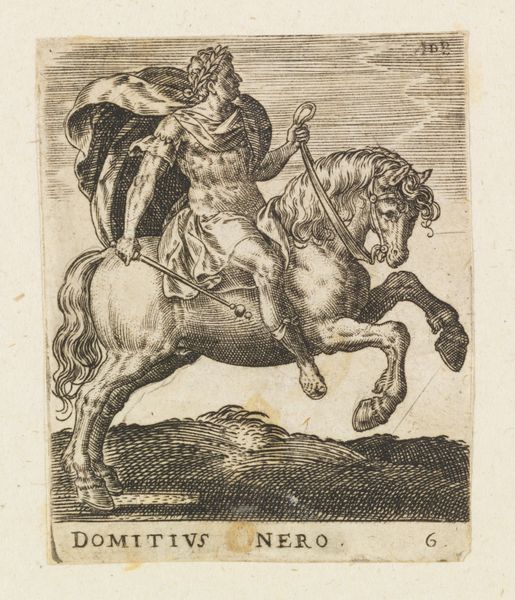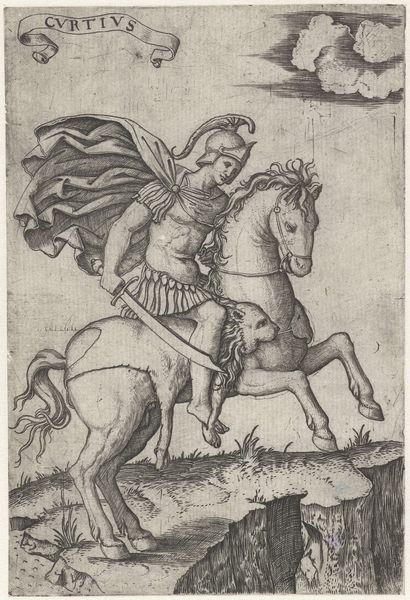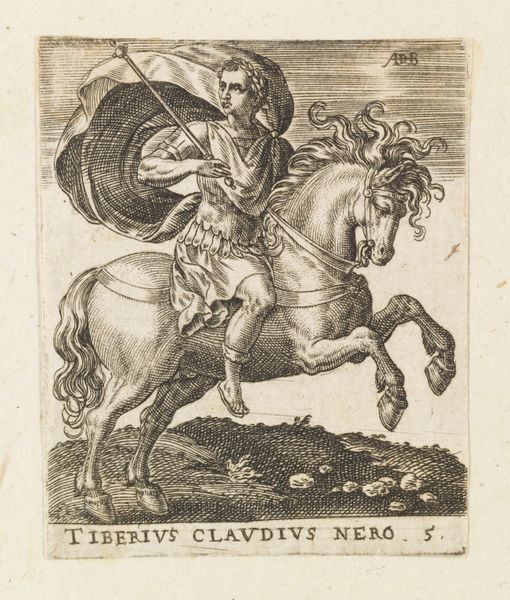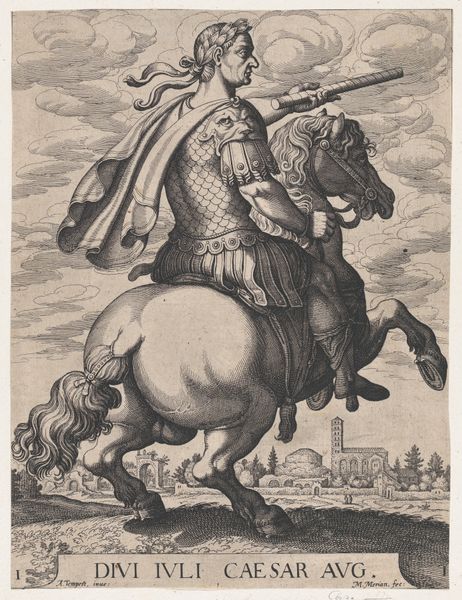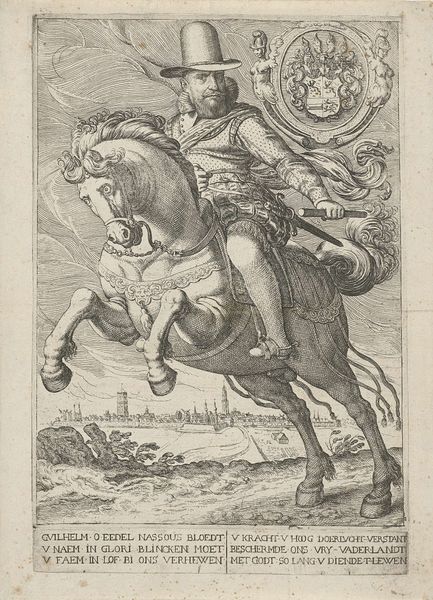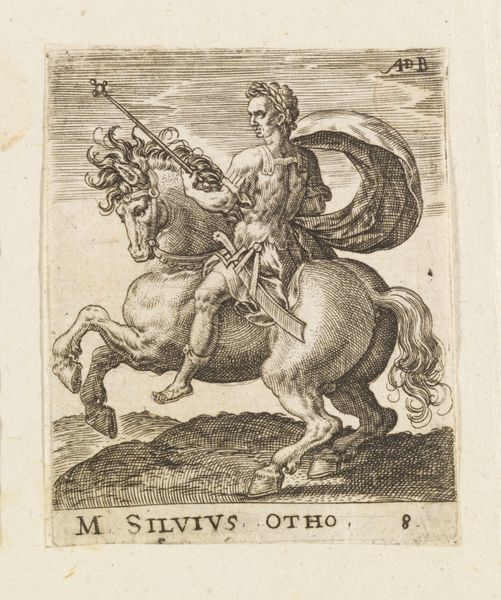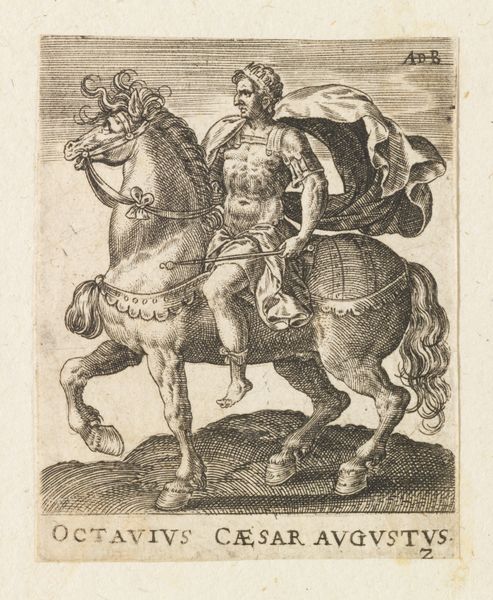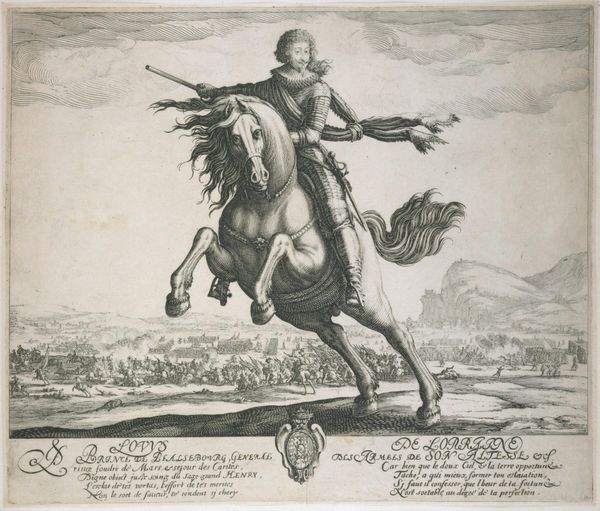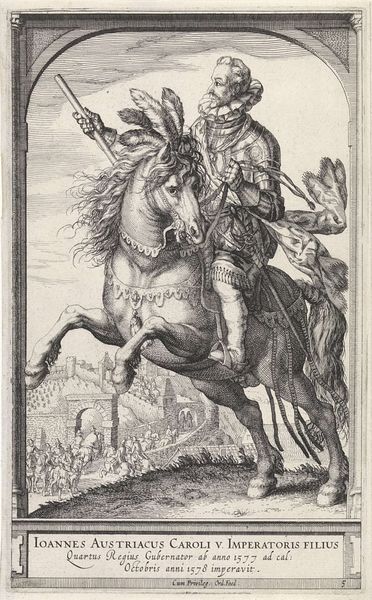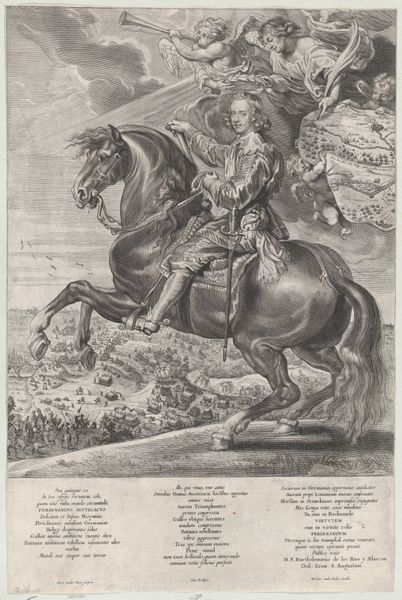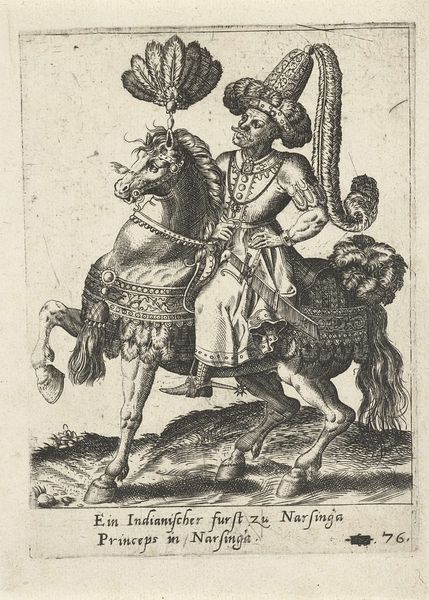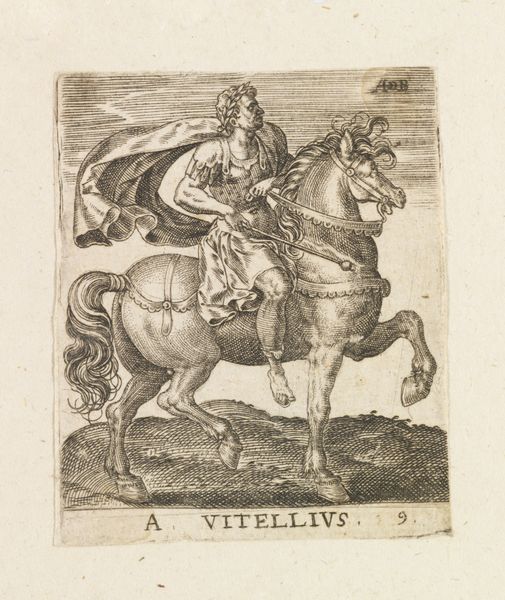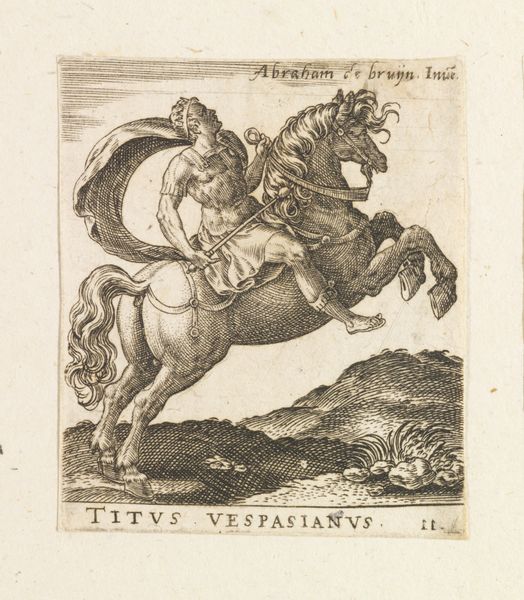
Domitianus, from "Twelve Caesars on Horseback" 1560 - 1592
0:00
0:00
drawing, print, engraving
#
portrait
#
drawing
# print
#
greek-and-roman-art
#
horse
#
men
#
line
#
history-painting
#
engraving
Dimensions: Sheet: 2 5/16 × 1 7/8 in. (5.8 × 4.7 cm)
Copyright: Public Domain
Curator: Here we have Abraham de Bruyn’s engraving, "Domitianus, from Twelve Caesars on Horseback," dating to between 1560 and 1592. It currently resides in the collection of the Metropolitan Museum of Art. Editor: My first impression is one of raw power, albeit in miniature. The rearing horse, the muscular emperor, it’s a declaration of dominance captured in delicate lines. Curator: It's intriguing how De Bruyn uses this visual vocabulary of power. Consider the historical context of Domitian, whose reign was marked by authoritarianism. The engraving, through its presentation of a commanding ruler, raises questions about the nature of power and its visual representation in art. Does it endorse or critique Domitian's rule through this classical imagery? Editor: I see layers of meaning in the symbolism. The horse, a long-standing symbol of nobility and control, is front and center, of course. Note how it's not just standing; it's rearing, almost mirroring the emperor's supposed ambition. Also, consider the laurel wreath, an emblem of victory and status. The whole image reinforces cultural memory of emperors as all-powerful figures. Curator: And who had the power to disseminate such imagery? It's essential to examine who commissioned this work and for what purpose. How might its original audience have understood it, considering the evolving political landscape of the 16th century, in contrast to our contemporary reading? Editor: Perhaps there's even an aspiration embedded within it—an attempt to conjure a classical ideal of leadership, even in a time far removed from the Roman Empire. We interpret this image through the filter of accumulated meanings, historical narratives, psychological understanding of power and leadership and personal and social associations. Curator: Looking at it now, through this lens, the print provides a space for us to question assumptions about authority, not only within a historical frame but within the political dimensions of our contemporary moment. Editor: It truly reveals how art can crystallize ambition, and legacy and how those things resonate through shifting ages and different experiences.
Comments
No comments
Be the first to comment and join the conversation on the ultimate creative platform.
